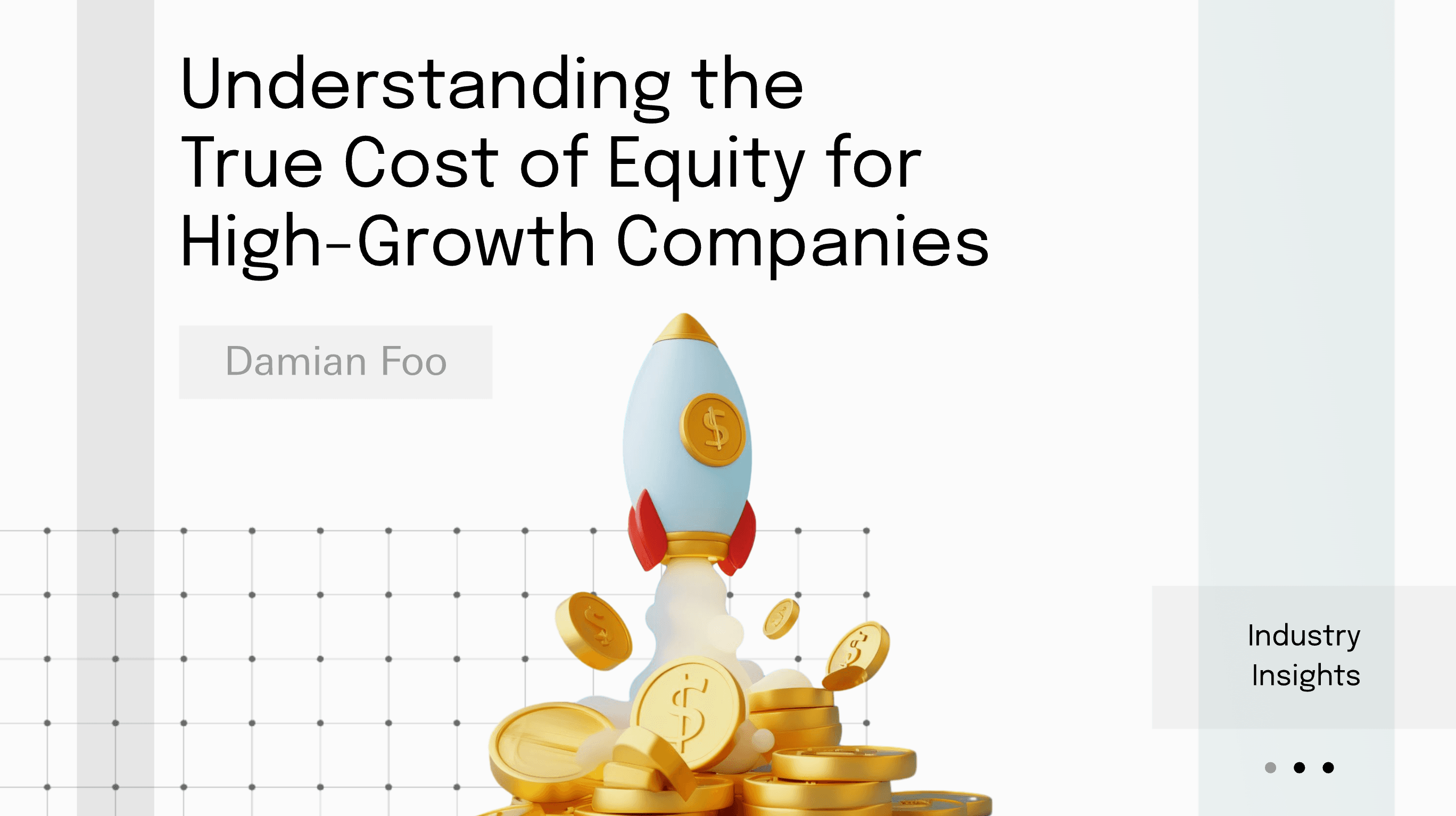Equity may seem free, but for high-growth companies it’s often the most expensive capital. The real cost isn’t interest rate–it’s dilution, lost control, and reduced upside. While equity makes sense at seed or in special late-stage cases, between seed and Series B smarter options like revenue-based financing, venture debt, or user acquisition funding can fuel growth without eroding ownership.
Aug 25, 2025 - 4

Every type of financing comes with a price–but not all costs are equally visible.
When companies borrow debt, the cost is explicit: interest rates, fees, amortization schedules, and repayment terms are known from the outset. In contrast, the cost of equity financing is far more opaque and often misunderstood, especially by high-growth companies. Equity may seem "free" because it doesn't require immediate repayments, but it carries a heavy and sometimes invisible long-term price: dilution and opportunity cost.
For founders, CFOs, and management teams, it is critical to continually assess whether they are funding growth through the most cost-effective instruments available. Misunderstanding or underestimating the cost of equity can quietly erode ownership and value over time, often without immediate warning signs. This can ultimately affect control, strategic flexibility, and the returns that early stakeholders realize when the company eventually exits.
In traditional corporate finance, the cost of equity is often defined through quantitative models such as the Dividend Discount Model (DDM) or the Capital Asset Pricing Model (CAPM). These frameworks attempt to estimate the return investors require, based on factors like market risk, beta, and expected dividends.
While these models are well-established and widely used for publicly traded companies, they don't cleanly apply to fast-moving, privately held businesses, particularly startups or early-stage companies. High-growth companies are typically pre-dividend, carry outsized risks, and operate in rapidly evolving markets. Standard assumptions, such as linear growth rates or stable risk premiums, simply don't hold.
For more mature, later-stage private companies–typically Series B, Series C, and beyond–the cost of equity is often aligned with the internal rate of return (IRR) expectations of venture capital or private equity investors. These return expectations usually fall between 20–30% annually, reflecting the risk and illiquidity premium investors demand.
However, for earlier-stage businesses (up to Series A), applying a static IRR assumption is inadequate. Growth at these stages tends to be exponential, volatile, and non-linear, meaning traditional finance metrics miss the true cost of capital, often severely underestimating the economic reality.
In practice, for high-growth companies, the cost of equity is better reflected by the value of ownership sold relative to the amount raised, rather than by static discount rates or generalized market assumptions.
A simple, intuitive way to approximate it:
Cost of Equity = Value of Ownership Given Away / Capital Raised
Let’s walk through an example:
If a founder were ever quoted a 150% annualized interest rate on a loan from a bank, there's almost no scenario where they would accept it. Yet, when raising equity, founders routinely overlook this implicit cost because the value transfer is indirect and spread over time. The dilution impact often only becomes clear years later, when preparing for an exit or IPO.
This is why the commonly cited 20–30% blanket assumption for cost of equity–borrowed from private equity and late-stage venture capital–is dangerously misleading for high-growth startups. Instead, cost assumptions must be tailored to reflect a company's specific growth trajectory, risk profile, and capital alternatives.
Ignoring the true cost of equity can lead to significant consequences:
Simply put: every dollar raised through equity carries a compounding cost that founders must deeply understand.
To maintain a balanced perspective: there are certainly scenarios where equity financing is the appropriate–and sometimes only option.
1. Very Early-Stage Companies
Seed-stage and pre-revenue startups often have no viable alternative but to raise equity. Without substantial operating history, cash flows, or hard assets to collateralize, debt or alternative financing structures are generally unavailable or prohibitively expensive.
In these cases, raising equity allows companies to fund product development, market entry, and initial team building–all essential precursors to creating the financial track record needed for future non-dilutive funding options.
2. Late-Stage Companies with Unique Circumstances
Mature, revenue-generating companies may still choose to raise equity when faced with:
In each of these cases, raising equity is not only rational–it may be the optimal strategic choice.
For companies beyond the seed stage but not yet "mature," equity should not be the default funding mechanism. Alternatives include:
These options allow companies to fuel growth while preserving ownership–and often at a far lower effective cost than equity dilution.
At PvX, we’ve assessed the benefits of various alternative funding solutions and devised what we feel is the superior financing alternative to drive growth and customer acquisition.
Founders and CFOs must take a disciplined, stage-specific, and holistic approach to financing decisions. Understanding the true cost of equity, particularly for high-growth companies, is not just a theoretical exercise. It directly affects long-term strategic control, shareholder returns, and the overall success of the business.
While equity remains a necessary and powerful tool at both the earliest and some mature stages, for businesses growing rapidly between seed and Series B, equity is often one of the most expensive ways to finance growth.
By incorporating a more sophisticated view of financing options–and seriously considering cohort-based, revenue-driven, or asset-backed structures–founders can preserve ownership, compound value faster, and build stronger, more resilient companies.
In today's competitive landscape, the companies that understand the real price of capital–and act accordingly–will be the ones best positioned to win.
Some of the fastest growing businesses in the industry